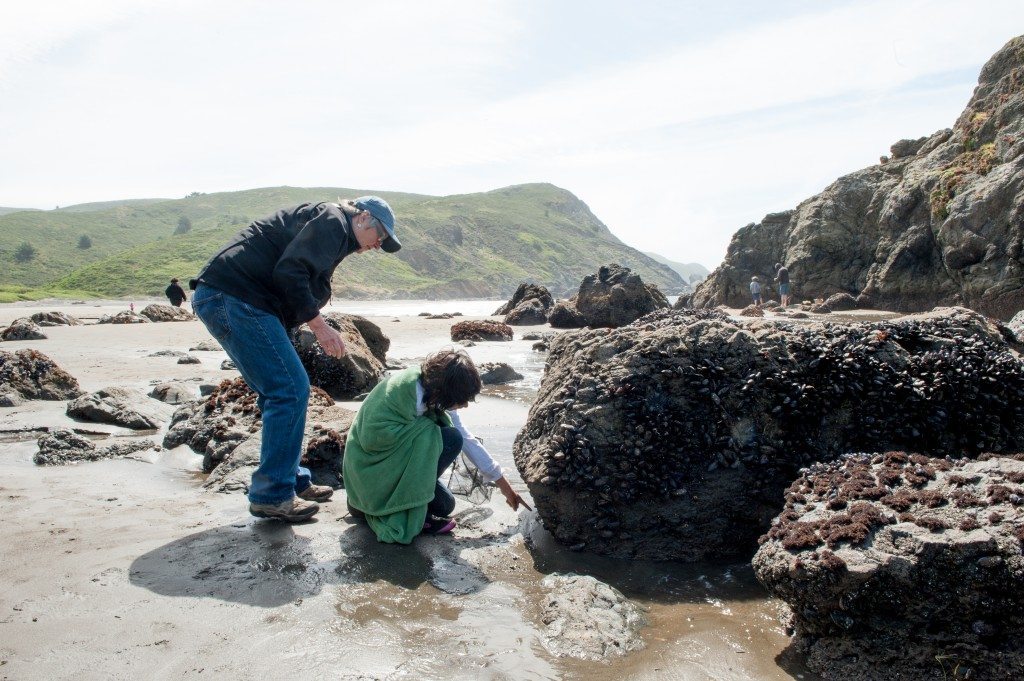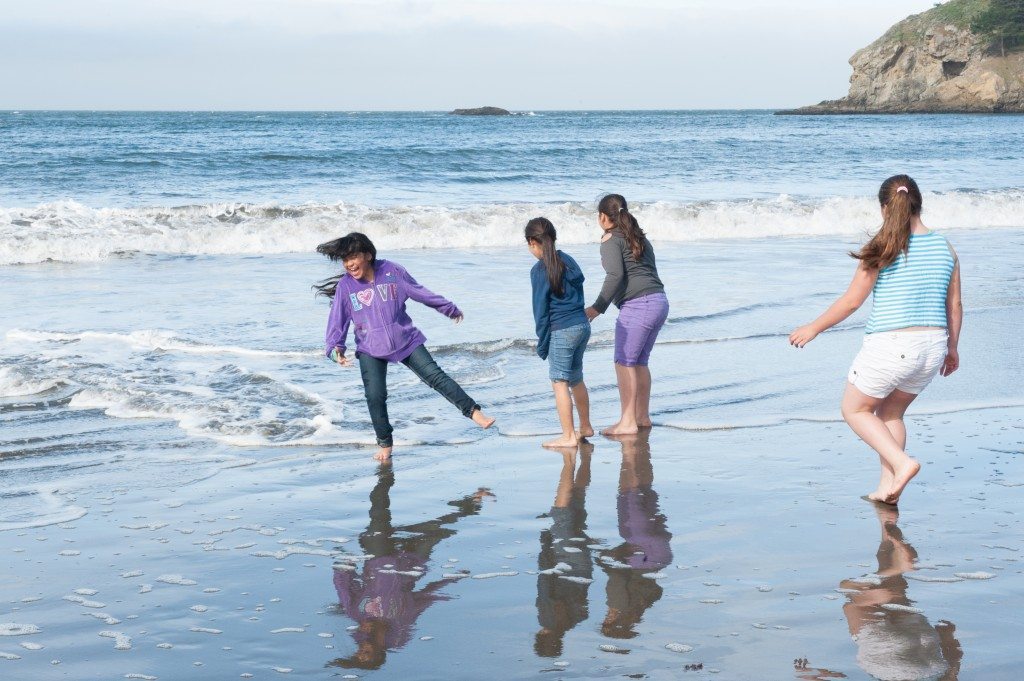An Eco-Ed school year winds up at the ocean
By Marissa Ortega-Welch
Gathered in the cafeteria of their school at eight a.m. on a school day morning in June, the three third grade classes of Esperanza Elementary repeat after me, matching their hand motions to mine in a sort of a dance that they know well:
“Rain … Creek … Bay …. Ocean.”
“Can you do it faster?” I challenge them. “On the count of three…”
They barely wait for me to count: “Rain, creek, bay, ocean!”
During their year of Eco-Education programs with Golden Gate Bird Alliance, this chant has become a mantra for these Oakland third graders. They’ve learned that the rain fills the creeks, which empty into San Francisco Bay and then out to the ocean. They’ve visited creek and bay shoreline habitats on field trips to Knowland Park and Arrowhead Marsh. They’ve also learned through an interactive physical watershed model that I bring to their classroom that the storm drains in their city streets are connected to this system too and when trash enters the storm drain, it’s heading for the bay and ocean as well.
But many of these students, as well as the students in our Richmond and San Francisco programs, have never actually been to the ocean. That’s why we’re gathered here so early in the morning, along with about twenty parent chaperones and a handful of our dedicated Golden Gate Bird Alliance Eco-Ed volunteers.
Call us crazy, but we’re taking sixty third graders to the beach.
These beach field trips have always been a capstone for GGBA’ year-long Eco-Education program. Some of our schools go as a family field trip on a weekend – a wonderful opportunity both for families to spend time together in nature and for us as educators to reach beyond just our elementary school students. Other schools opt to visit the beach as a weekday school field trip so that all the students are able to attend, regardless of whether their parent can accompany them.
After a brief safety talk at the school with the students and parents, we board the three buses GGBA has chartered for Esperanza Elementary and begin the hour-long drive to Muir Beach in Marin. The students squeal in delight as we cross the bay from Richmond and see the Golden Gate Bridge in the distance.
We arrive at the beach in time for low tide. I always like to circle the students around the first rock we see and point out how from a distance it just looks like a rock but, as we come closer, we see it is actually covered with living organisms — barnacles, mussels, and snails.
The students seem doubtful when I tell them that all these things clinging to the rocks are living organisms, until a brave student reaches out to hold her finger against the soft green slimy flesh of an anemone and it moves. The kids jump up and down in amazement. We find anemones with crab legs sticking out of the centers and we all feel amazed. Even many parents and some teachers have never explored tidepool organisms and are fascinated to see the strange-looking creatures living on the rocks, learn a bit of their life history, and hear that yes, in fact these are living beings.
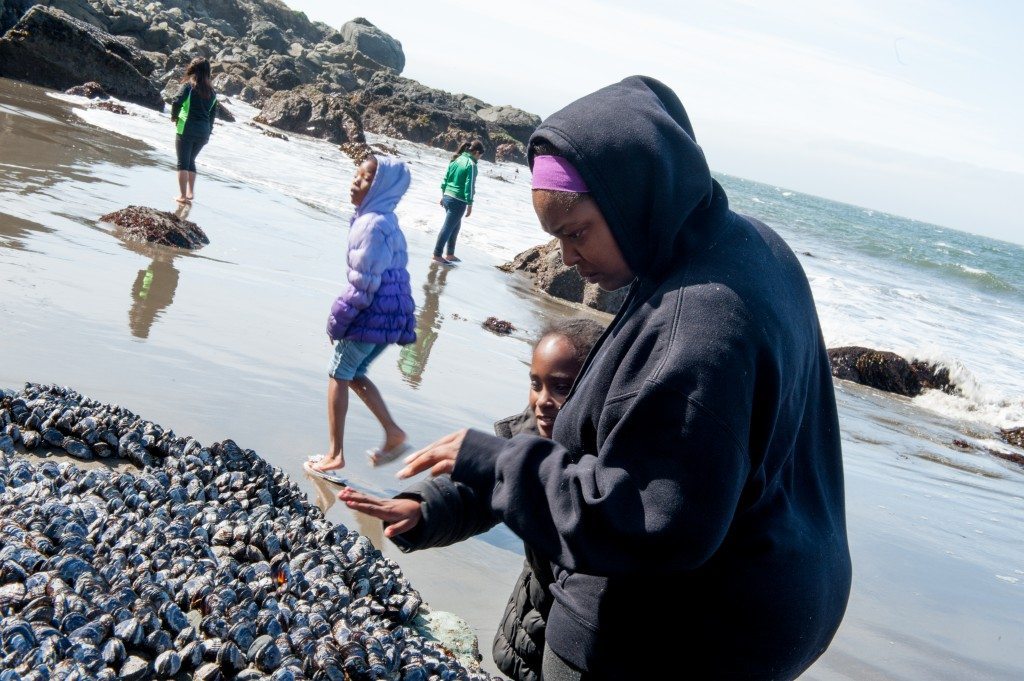
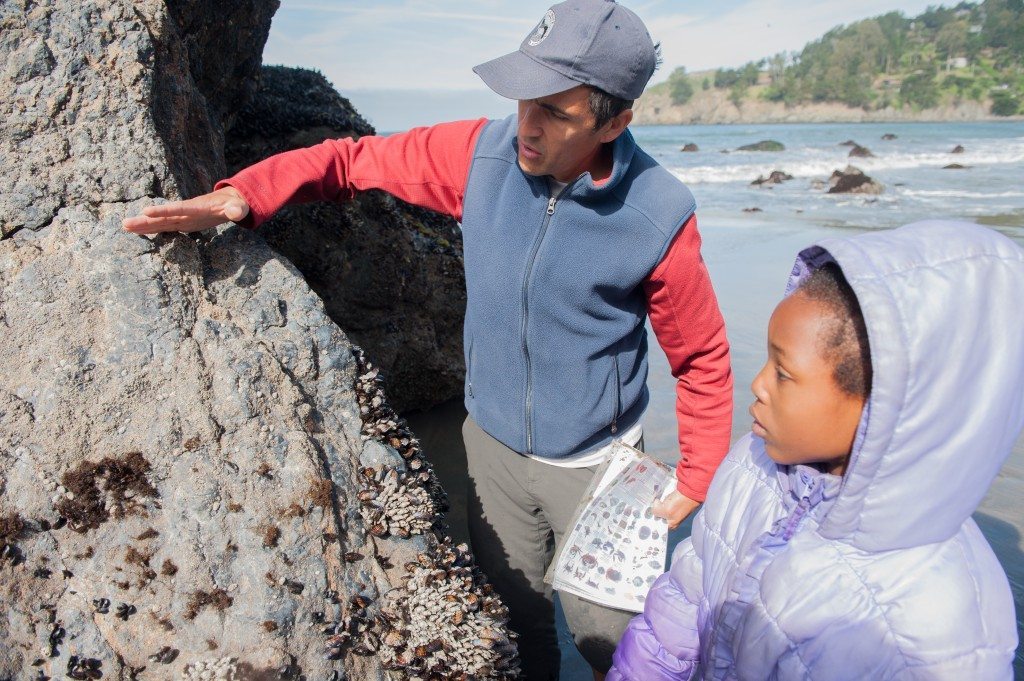
We’ve been taking families to Muir Beach for years and sea stars have always been a plentiful highlight for our families. But this year, there are very few of them. We’re not sure why – perhaps it’s a product of the mysterious sea star mass wasting (have as a link to below) that is being documented on beaches throughout the west coast. We were lucky to still have a few sea stars visible on the lowest tides of our beach visits this year. The students marvel at their colors and how hard and rough they feel.
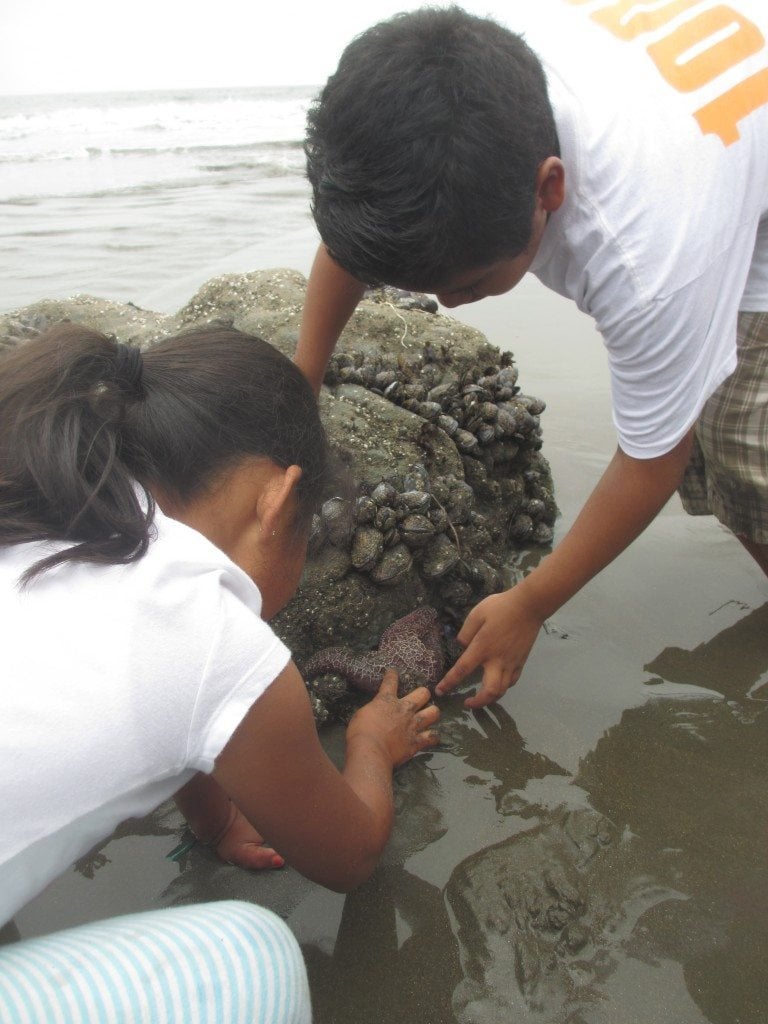
But once the students discover that they can catch crabs among the rocks, they completely lose interest in everything else. We catch lined shore crabs, hermit crabs, and an occasional rock crab. I have one of the students draw a circle in the sand: It’s time for crab races. Not only is this a fun game, but it’s the only way I can get the students to put the crabs back in the habitat so that we can all go have lunch. We place the crabs in the center of the circle. The rock crabs and hermit crabs just sit there, but the lined shore crabs scuttle sideways quickly to the finish line while everyone cheers on their chosen one.
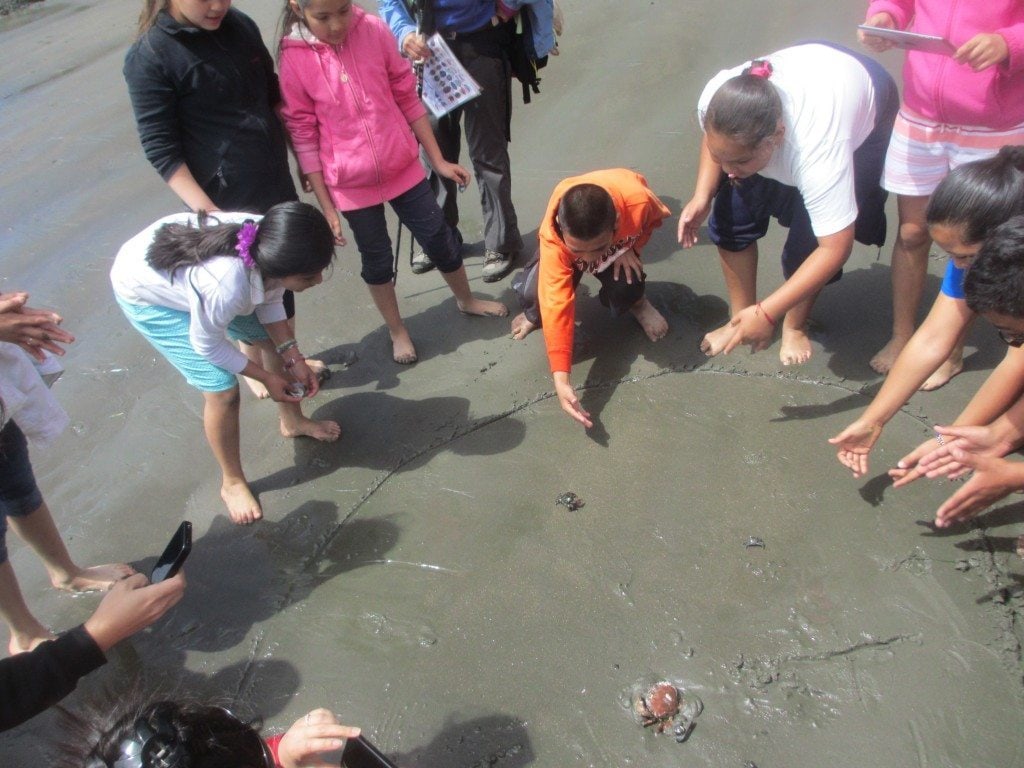
After a picnic lunch and sandcastle building, we hike up to the coastal bluffs above the beach to get a wider view of the ocean. Turkey Vultures and Red-tailed Hawks soar above us as we climb. On occasion we get lucky and see a California sea lion fishing in the surf, a harbor seal sunning on the rocks, or once even a grey whale hanging out in the cove.
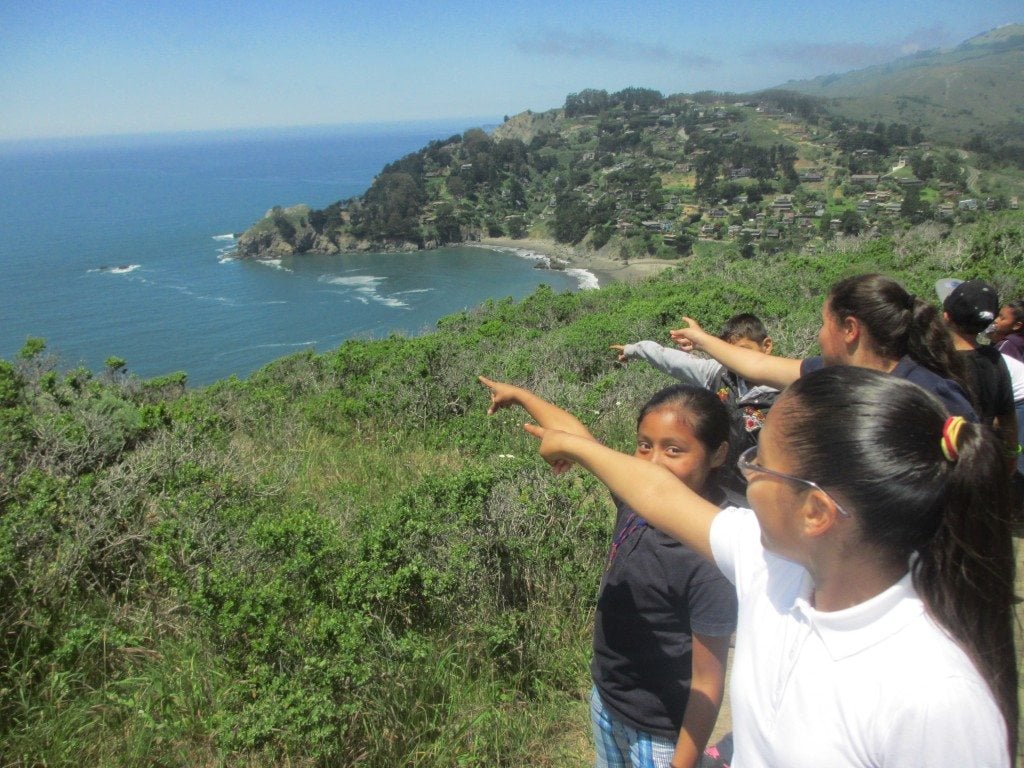
Our beach field trip is a wonderful way to end the program. From time to time, I run into this year’s fifth and sixth graders at the school who remember the trip from when they were in third grade. One of our take-home messages from the Eco-Ed program is that the trash in our city streets ends up in the storm drains and then the ocean. What better way to inspire students to keep trash off our streets than take them out to the very habitat affected by our trash and show them how beautiful it can be?
On the bus ride home, the squealing is finally over because all the kids and parents have fallen asleep. I wish I could do the same. I need the rest. Tomorrow I’ll be meeting another group of sixty third graders at eight a.m. to do the same field trip again. I’m lucky that going to the beach is just another work day for me. For most of the students and even some of our parents, it’s a first-time and magical experience.
